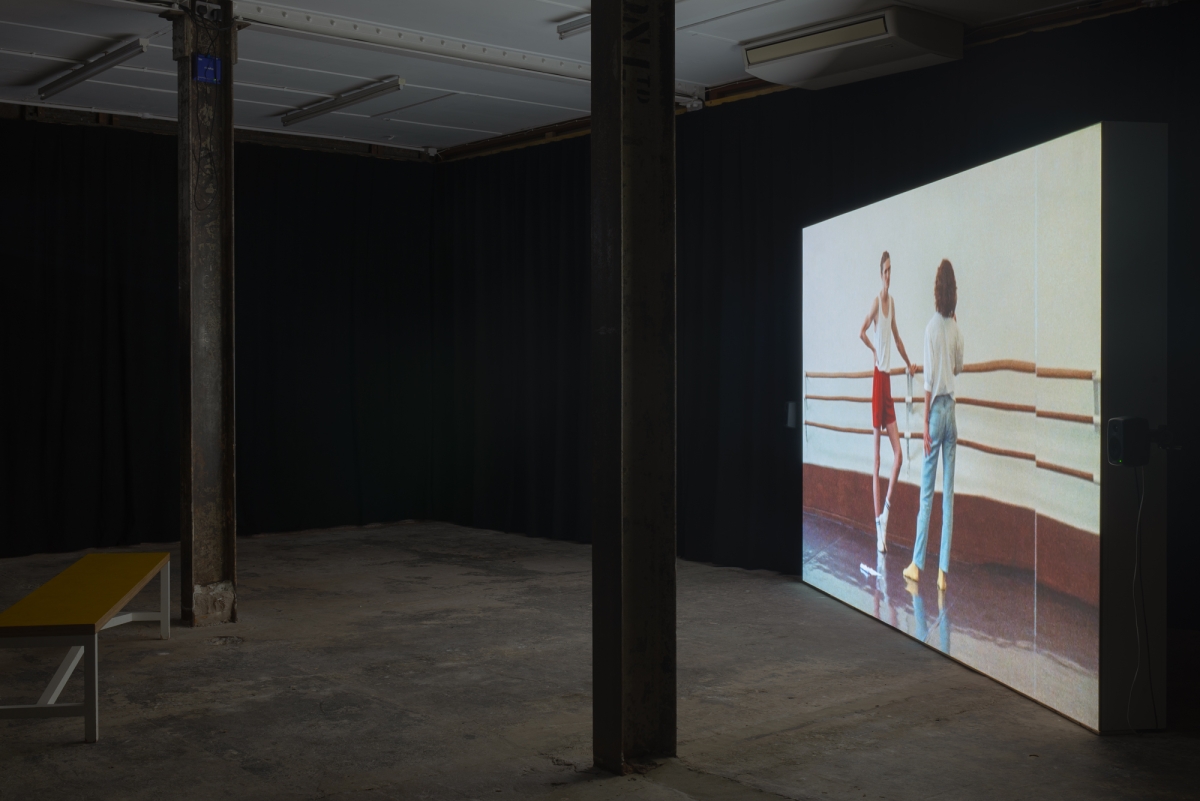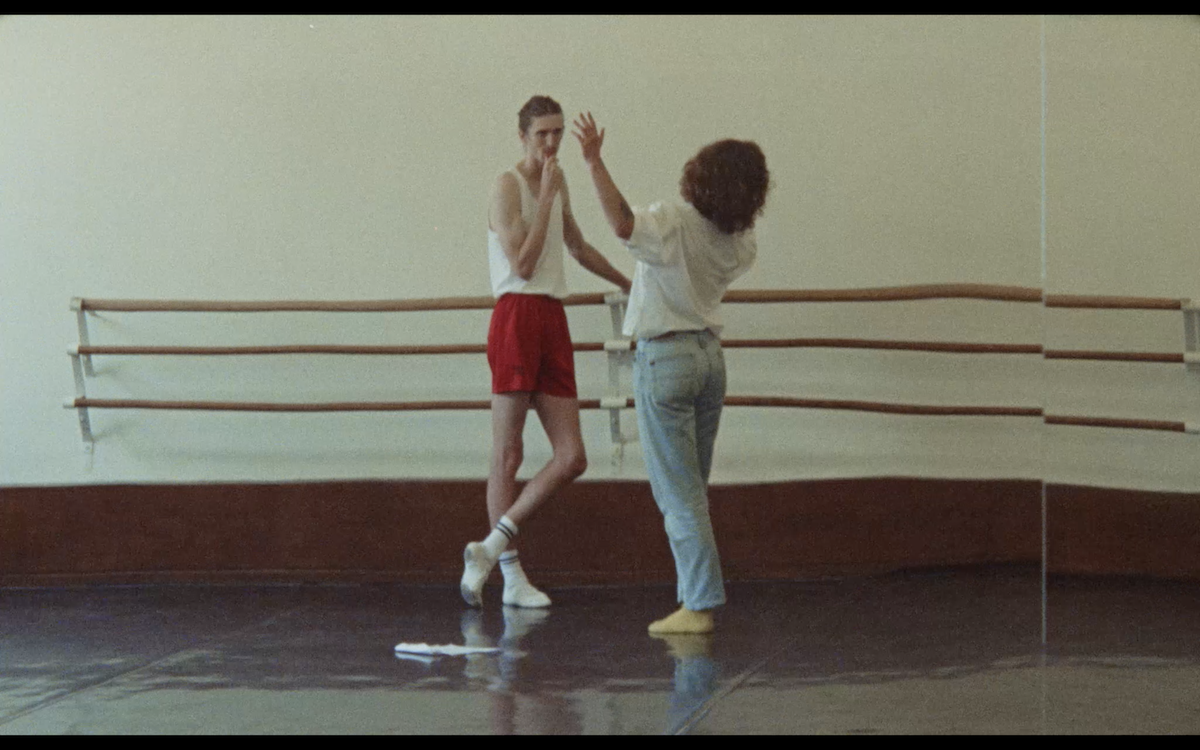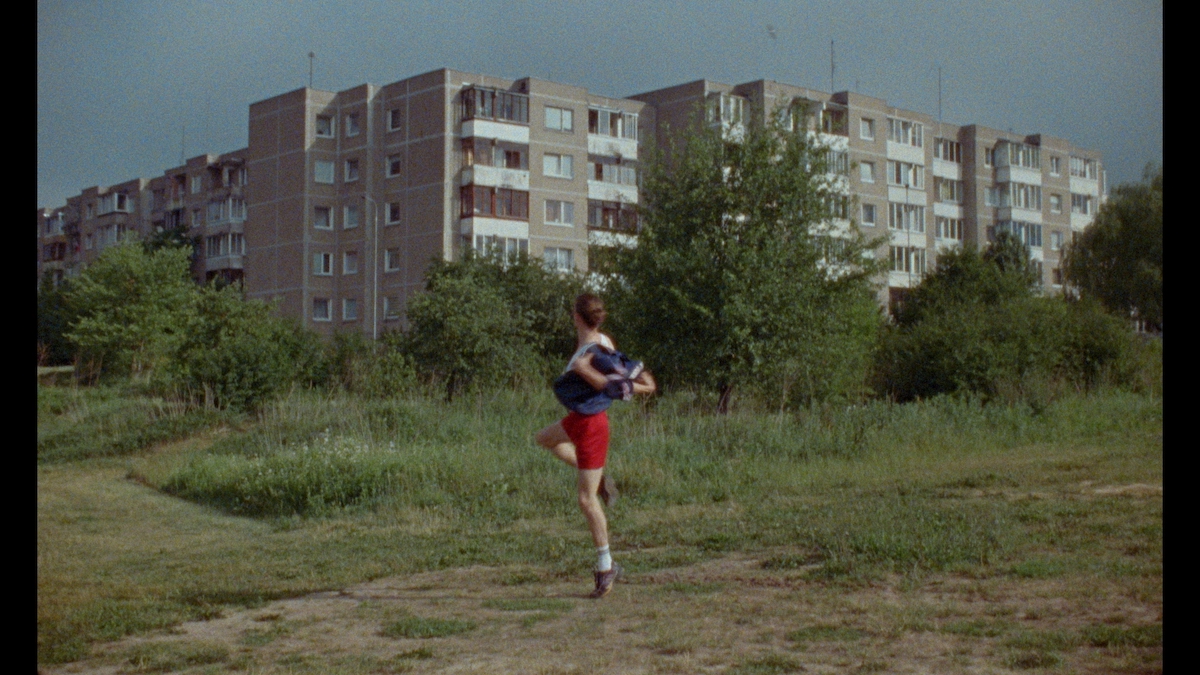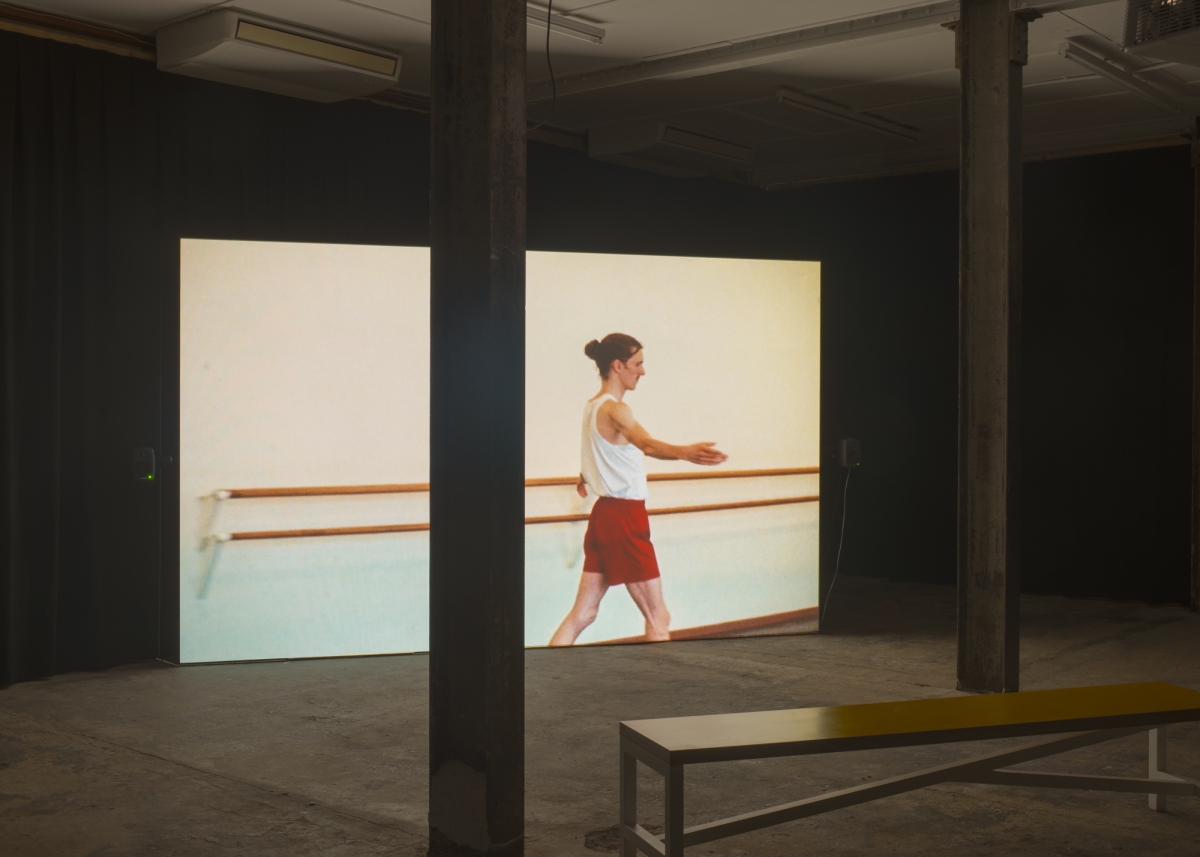SWANBACK is a new hybrid film by Marija Nemcenko that blends fictional and documentary narratives exploring how within both British and Russian imperialisms the symbol of the swan – associated with truth, purity and aristocracy – has been used to strengthen the structures of oppression on people’s lives and upon their bodies.
The film portrays a fictional character, played by former classical ballet dancer Oliver Connew, partially based on interviews with members of the Lithuanian community, who illegally migrated to work in the UK before Lithuania joined the European Union in 2004. The film also responds to an infamous article printed in The Sun newspaper in 2003 about Eastern European migrants entitled, ‘Swan Bake: Asylum seekers steal the Queen’s birds for barbecues’. SWANBACK’s diaristic narrative retells homo-sovieticus’ – to paraphrase writer Svetlana Alexievich’s pejorative term for an average conformist person in the Soviet Union – journey as an illegal economic migrant to the UK where he gets accused of killing and eating the royal swans.
The camera follows Connew in the dance studio as he attempts to learn from the 1963 video recording of ‘Prince’s solo. Act I’ from Swan Lake (1875-76) by Russian composer Pyotr Ilyich Tchaikovsky with the highly acclaimed dancer Rudolph Nureyev as Prince Siegfried. A production of Swan Lake was shown on TV on repeat during the 1991 coup against Mikhail Gorbachev during the fall of the Soviet Union, forever connecting the ballet to political upheaval. Last year, being forced to shut down by Russian officials due to its opposition to the war in Ukraine, Russia’s last remaining independent broadcaster Dozhd TV recalled the historical event by screening the same production of Swan Lake on a loop during its final broadcasting hours.
In SWANBACK the tale of the illegal immigrant merges with Connew’s own journey from ballet to semantic dance while overcoming the violence of the imperially constructed art of ballet instilled within his body. Instead of choosing to respond to the violence of ballet altering his body with the violence of amnesia altering his memory, he chooses to accept the scars that ballet left upon him.
Marija Nemčenko is a Ph.D. candidate at Vilnius Art Academy, a member of the Lithuanian Interdisciplinary Artists‘ Association (LIAA) and Scottish Artists Union, and ½ of BRUT Collective, working across art, architecture, and socially engaged practice fields. She has exhibited nationally and internationally, including Orlando Museum of Art, Florida, Art Gallery of Alberta, Edmonton, Gallerie delle Prigioni, Treviso, Glasgow International Biennial, Swallow project space, Vilnius, and A.M. Qattan Foundation, Ramallah, Palestine.
Exhibition
10.11 –16.12.23
Open
Thursday – Saturday, 11am – 5pm
Address: David Dale Gallery & Studios, 161 Broad St, Glasgow G40 2QR, UK
Photography: Max Slaven

Swanback. Marija Nemčenko. Photo by Max Slaven

Swanback. Marija Nemčenko. Photo by Max Slaven

Swanback. Marija Nemčenko. Photo by Max Slaven

Swanback. Marija Nemčenko. Photo by Max Slaven

Swanback. Marija Nemčenko. Photo by Max Slaven

Swanback. Marija Nemčenko. Photo by Max Slaven

Swanback. Marija Nemčenko. Photo by Max Slaven

Swanback. Marija Nemčenko. Photo by Max Slaven
The Wrecker
1)
I’ve had a pain in my knee for the last three days now. Ever since I came back from the continent. It niggles whenever I cross my legs or stand for too long at the kitchen sink or the workbench or when I’m waiting in line at the post office. It’s a kind of stinging pain, a thin wiry pain that shoots through. I forgot my compression socks, maybe that was why. A thick ruddy vein entangling around the jagged cap of my knee perhaps. At altitude, the deep veins, particularly in the legs, can clog up at a faster rate and you need to move around or stretch the legs out to keep the blood from pooling. Drinking water is also important, staying hydrated improves the blood flow. I probably shouldn’t have had that gin and tonic as we flew over the channel.
The niggling irks me and it often pops up at the most unusual of times. A knot in a string, a blurry biro mark on the back of my hand. It’s like it’s trying to remind me of something that I’ve forgotten about but I’ve got no idea, the idea flew off many moons ago. I fold up the newspaper and lay it down on the floor. I only buy it for the crossword these days anyway, the rest of it is full of noise. Memorial poppy sellers fearing for their lives and Eastern Europeans roasting wild birds. I get up out of the armchair and turn on the big light. Standing, I raise up onto my tip toes and down, up and down to get the blood flowing again. I walk over to the bench, light up a cigarette and begin.
2)
Royal Fish, or Fishes Royal, are cetaceans (whales, porpoises, dolphins) and sturgeons that are owned by the Crown. They are a Royal Prerogative and therefore the King has a right to claim them. In England, Wales, and Northern Ireland, Royal Fish include all whales, porpoises, dolphins, and sturgeons. In Scotland, Royal Fish only include whales over 25ft long.
In 1324, King Edward II declared the sturgeon ‘royal’ due to its armour-plated skin and any brought ashore were legally bound to first be presented to the King. Wildlife conservators are currently making plans to bring back the 400-million-year-old fish that disappeared from British waters over 25 years ago.
Today, in England, Wales, and Northern Ireland, the Fishes Royal Prerogative is administered on behalf of the Crown by HM Coastguard’s Receiver of Wreck. If you find a deceased whale, porpoise, dolphin or sturgeon on the coast please contact the Receiver of Wreck on 0203 817 2575 or email the team at row@mcga.gov.uk.
3)
She turns and runs to the back of the stage, arms gliding up and down in a desperate rhythm. A damp warmth spreads across her abdomen and dark red seeps through the white tulle of her skirt. She sees her mother in the audience surrounded by diplomats and bureaucrats, and begins to cry. Their faces are the same. She knows it’s the end now. It’s all over. Arms raised in fifth position, she flings herself from her perch, falling to the hidden safety mattress stage right. As she lands, the officials roar with delight and the cast collect in a giddy bevy around her. The colour pulls from her white painted face, her blood forming a soft glow around her on the mattress. ‘I felt it, it was perfect’, she whispers. She turns her chin for a final glance upwards. The stage lights fill the screen with a brilliant white glow.
Written by Caitlin Merrett King

Swanback. Marija Nemčenko, video still

Swanback. Marija Nemčenko, video still

Swanback. Marija Nemčenko, video still

Swanback. Marija Nemčenko, video still

Swanback. Marija Nemčenko, video still

Swanback. Marija Nemčenko, video still
SWANBACK has been organised in partnership with Lithuanian Interdisciplinary Artists’ Association (LIAA). LIAA activities are supported by the Lithuanian Council for Culture. SWANBACK was made possible with funding from Creative Scotland , Hope Scott Trust, LIAA, Lithuanian Council of Culture and Lithuanian Culture Institute.
This exhibition is part of an ongoing series of organisational exchanges organised by David Dale Gallery since 2015. Previous exchanges have taken place in partnership with P////AKT (Amsterdam), Rupert (Vilnius), The Workbench (Milan), Swimming Pool (Sofia), and Salts (Birsfelden). In 2024, David Dale Gallery will present a solo exhibition by a Glasgow-based artist at Atletika gallery at SODAS2123, a culture centre run by the LIAA in Vilnius.
The artist would like to thank: Catalina Barroso Luque, Caitlin Merrett King, Gleb Osatinski, Kristina and Marius Užpelkiai, Martynas Mickenas, Ruta Adele Jekentaite, Ula Tornau and Vytautas Katkus.






























